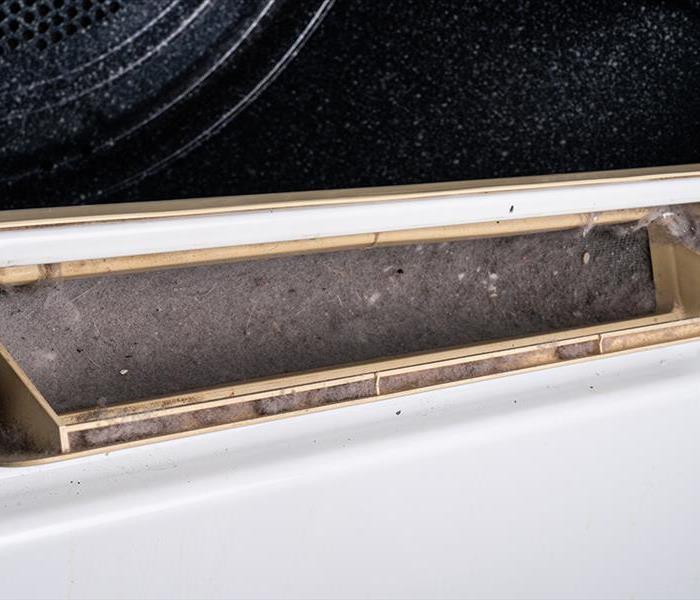Dryer Maintenance Paves the Way to Fire Safety
2/23/2020 (Permalink)
Between being forgetful and wrapped up with life, you may not have cleaning the lint out of your dryer at the top of your to-do list. But, it may be one of the most important preventative measures you can take for fire safety in your own home. And fire prevention certainly doesn't stop there. Follow these tips for a more extensive dryer maintenance below.
- Clean out the lint trap filter after every load. This will keep lint from building in the dryer vent and causing a fire.
- Every 6 months check behind the dryer to ensure that the exhaust hose is not crushed and is circulating properly.
- Every 6 months you should also make sure the exhaust vent, as well as your duct work, receive a thorough cleaning. For that service make sure to contact your local SERVPRO.
Also, invest in a fire extinguisher and make sure your smoke detectors are working properly.
Unfortunately, even though we do our due diligence in preventing a fire, sometimes a situation quickly spirals out of control. Here are some fire facts that show exactly what kind of damage can occur.
Smoke and soot facts:
Hot smoke rises and travels quickly to cooler areas. Smoke pours under doorways and around plumbing systems, seeping through the holes used by pipes to go from floor to floor. The type of smoke may greatly affect the restoration process. Soot is the residue from a fire and not only can it leave a foul smell, but it can also be harmful to your health by causing respiratory problems if not cleaned up properly.
Different Types of Smoke:
There are two different types of smoke–wet and dry. As a result, there are different types of soot residue after a fire. Before restoration begins, SERVPRO of Jackson/Crockett County will test the soot to determine which type of smoke damage occurred. The cleaning procedures will then be based on the information identified during pretesting.
Here is some additional information:
Wet Smoke – Plastic and Rubber
Low heat, smoldering, pungent odor, sticky, smeary. Smoke webs caused by wet smoke are more difficult to clean.
Dry Smoke – Paper and Wood
Fast burning, high temperatures, heat rises, therefore, smoke rises.
Protein Fire Residue – Produced by evaporation of material rather than from a fire
Virtually invisible, discolors paints and varnishes, extreme pungent odor.
Our Fire Damage Restoration Services
Since each smoke and fire damage situation is different, each one requires a unique solution tailored to the specific conditions. We have the equipment, expertise, and experience to restore your fire and smoke damage. We will also treat your property with care and your family with empathy and respect.
Have Questions about Fire, Smoke, or Soot Damage?
Call SERVPRO at Jackson/Crockett County at 731-423-9944 and let us tell you how we remedy a fire damage situation!






 24/7 Emergency Service
24/7 Emergency Service
